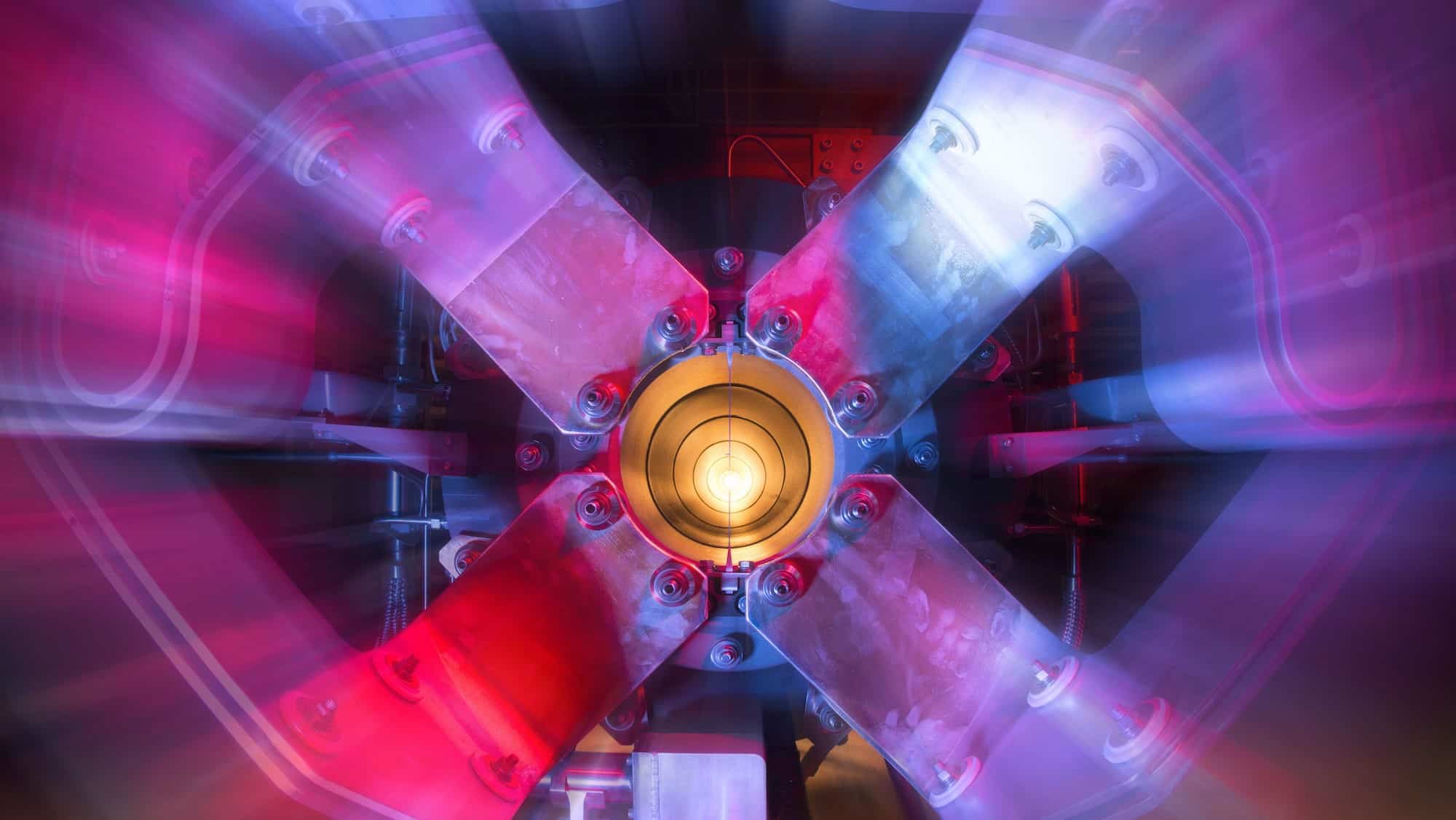MCLA Physics Professor's Research Featured as one of the Top 10 Physics Breakthroughs of 2023 in Physics World Publication
January 26, 2024
MCLA Physics Professor Dr. Emily Maher, one of 65 scientists in the MINERvA collaboration at Fermi National Accelerator Lab (Fermilab), has published work that has been chosen as one of the Top 10 Physics Breakthroughs of 2023 in Physics World.
Over a 10-year span, the MINERvA detector recorded the interactions of neutrinos and antineutrinos, the antimatter partners of the neutrino. The physicists working on the MINERvA experiment used the data to make a ground-breaking new measurement which was published last February in Nature titled “Measurement of the axial vector form factor from antineutrino–proton scattering.”

Proton probe: the MINERvA experiment at Fermilab has been used to study the structure of the proton using neutrinos. (Courtesy: Reidar Hahn/Fermilab and Physics World Publication)
“We work to uncover and understand nature's smallest building blocks,” said Dr. Maher. “I am repeatedly amazed at how we use particle accelerators that span miles to shoot invisible particles at multi-story detectors to "see" something as small as a proton. No human has even been able to make this measurement before, and I am delighted that this science is not merely interesting to specialists in my field but also recognized by the larger world as a real contribution.”
To be featured on the list of physics breakthroughs, research must have been published within the last year, have significant advances in knowledge or understanding, and show the importance of work for scientific progress and/or development of real-world applications.
The study, led by Tejin Cai at the University of Rochester in the US and Canada’s York University, shows how information about the internal structure of a proton can be gleaned from neutrinos scattering from a plastic target. The team focused on isolating the signal from neutrinos scattered off lone protons within the background of those scattered off protons bound in carbon nuclei. Their innovative approach involved simulating and subtracting the carbon-scattered signal from experimental data. This provides insights into proton structure and enhances the understanding of how neutrinos interact with matter.
Dr. Maher has spent more than 20 years studying neutrinos. She began her work at Fermilab in 2000, studying the tau neutrino for her thesis work. This experiment – DONuT (Direct Observation of Nu Tau) – made the world’s first direct observation of the tau neutrino. Maher said she enjoys studying neutrinos because “neutrinos continually surprise us and point us to new physics.”
About MCLA:
At MCLA, we’re here for all — and focused on each — of our students. Classes are taught
by educators who care deeply about teaching, and about seeing their students thrive
on every level of their lives. In nearly every way possible, the experience at MCLA
is designed to elevate our students as individuals, leaders, and communicators, fully
empowered to make their impressions on the world. In addition to our 128-year commitment
to public education, we have fortified our commitment to equitable academic excellence.
For 10 of the last 12 years, MCLA has been named a Top Ten College by U.S. News and
World Report. MCLA also appears on the organization’s list of top National Public
Liberal Arts Colleges. Since the list was created, MCLA has risen to #33 as a Top
Performer on Social Mobility and ranks first among all
Massachusetts liberal arts schools, which measures how well schools graduate students who receive Federal Pell Grants. Learn more at www.mcla.edu
